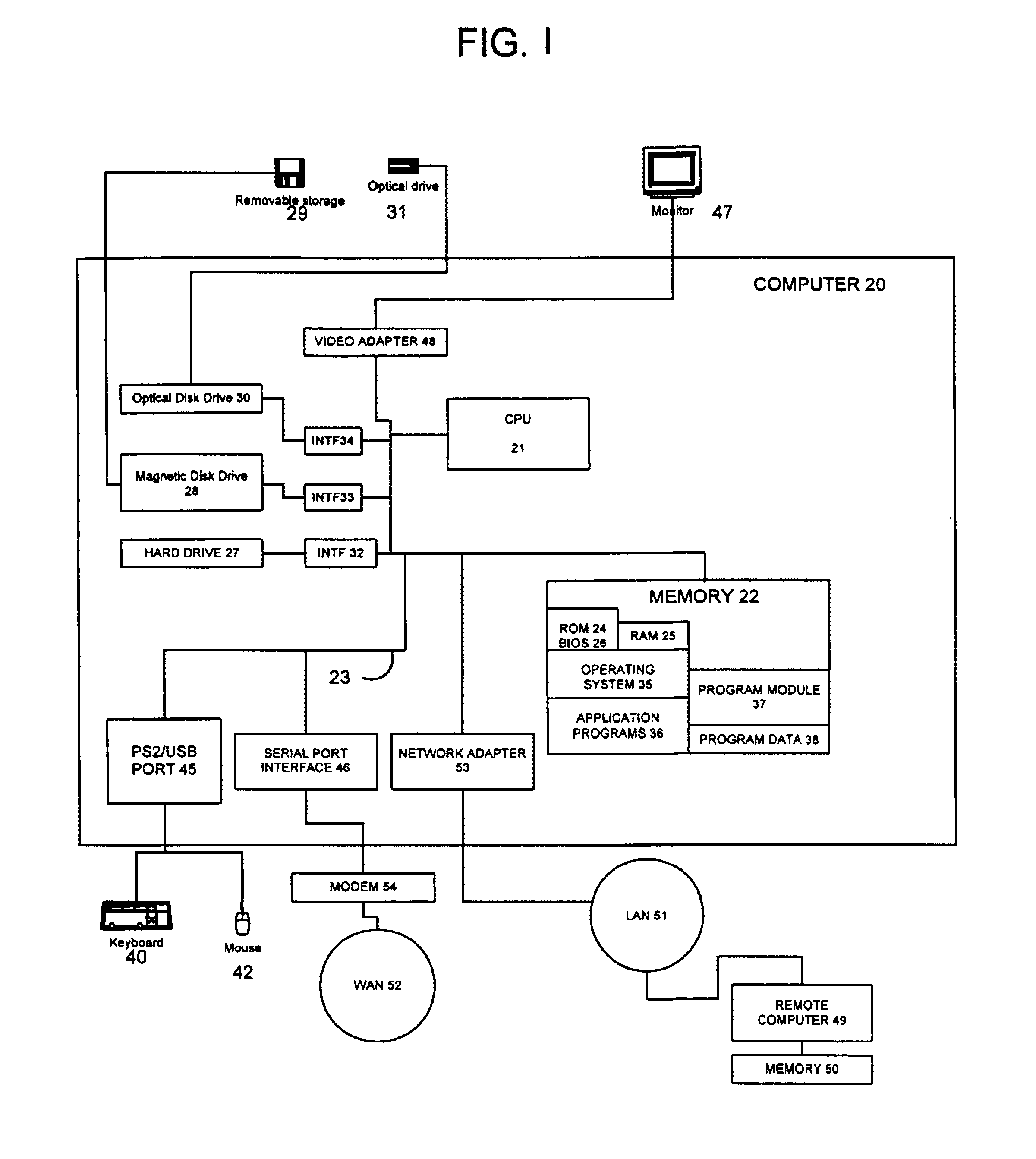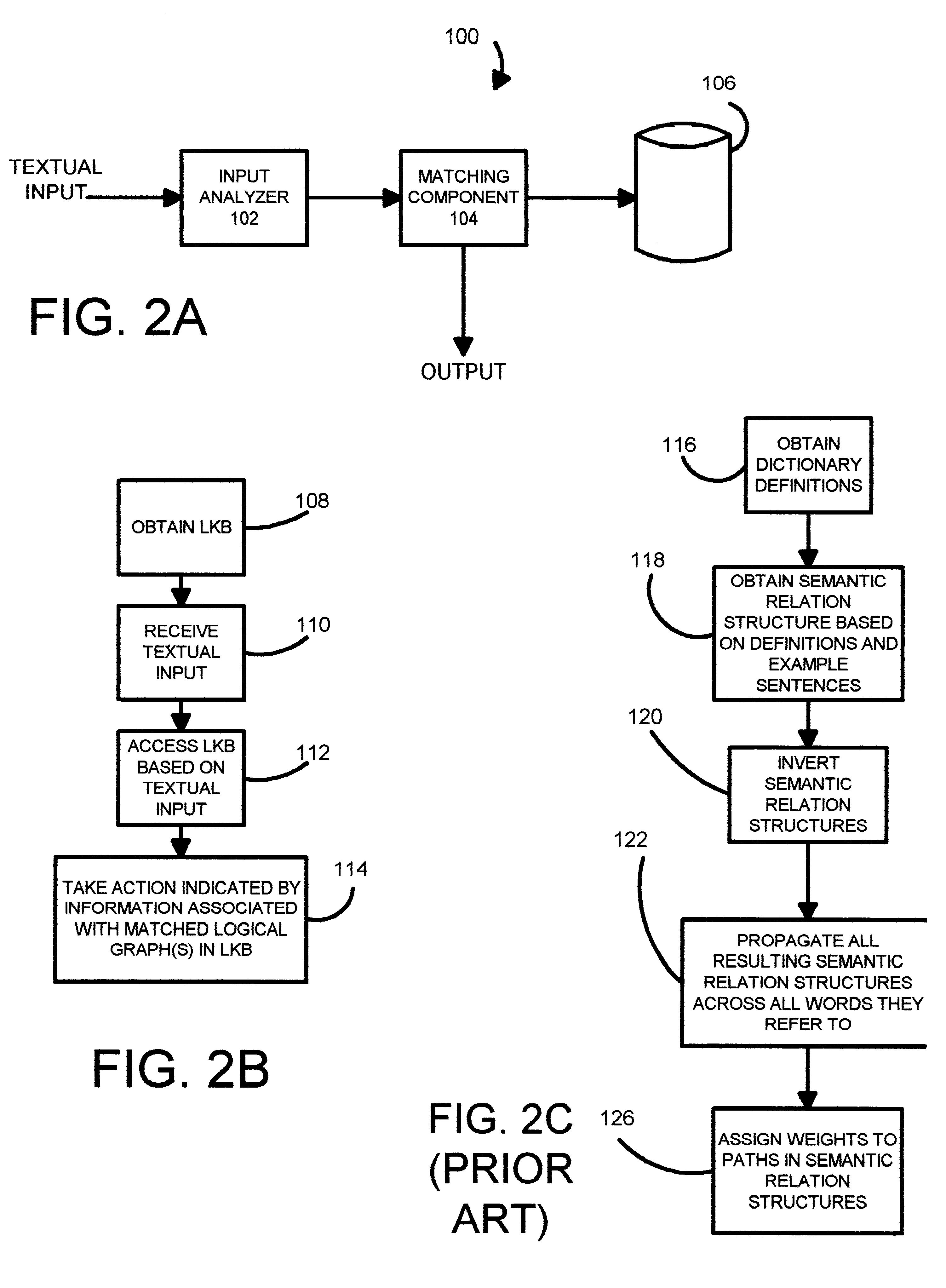System and method for matching a textual input to a lexical knowledge base and for utilizing results of that match
a technology of lexical knowledge and matching system, applied in the field of system and method, can solve the problem that developers cannot exhaustively specify the wide range of utterances of users
- Summary
- Abstract
- Description
- Claims
- Application Information
AI Technical Summary
Benefits of technology
Problems solved by technology
Method used
Image
Examples
Embodiment Construction
accordance with one aspect of the present invention.
[0022]FIG. 2B is a flow diagram illustrating operation of the system shown in FIG. 2A in accordance with one aspect of the present invention.
[0023]FIG. 2C is a flow diagram illustrating one embodiment of obtaining a lexical knowledge base which is currently known.
[0024]FIG. 2D is an inverted semantic relation structure.
[0025]FIG. 2E is a simplified diagram illustrating a portion of a lexical knowledge base in accordance with one embodiment of the present invention.
[0026]FIG. 3A is a more detailed block diagram illustrating the operation of the system shown in FIG. 2A in accordance with one aspect of the present invention.
[0027]FIG. 3B is a graph structure for a textual input formed in accordance with one embodiment of the present invention.
[0028]FIG. 3C is a graph structure contained in an LKB in accordance with one embodiment of the present invention.
[0029]FIGS. 4A is a flow diagram illustrating performing a fuzzy match in more de...
PUM
 Login to View More
Login to View More Abstract
Description
Claims
Application Information
 Login to View More
Login to View More - R&D
- Intellectual Property
- Life Sciences
- Materials
- Tech Scout
- Unparalleled Data Quality
- Higher Quality Content
- 60% Fewer Hallucinations
Browse by: Latest US Patents, China's latest patents, Technical Efficacy Thesaurus, Application Domain, Technology Topic, Popular Technical Reports.
© 2025 PatSnap. All rights reserved.Legal|Privacy policy|Modern Slavery Act Transparency Statement|Sitemap|About US| Contact US: help@patsnap.com



